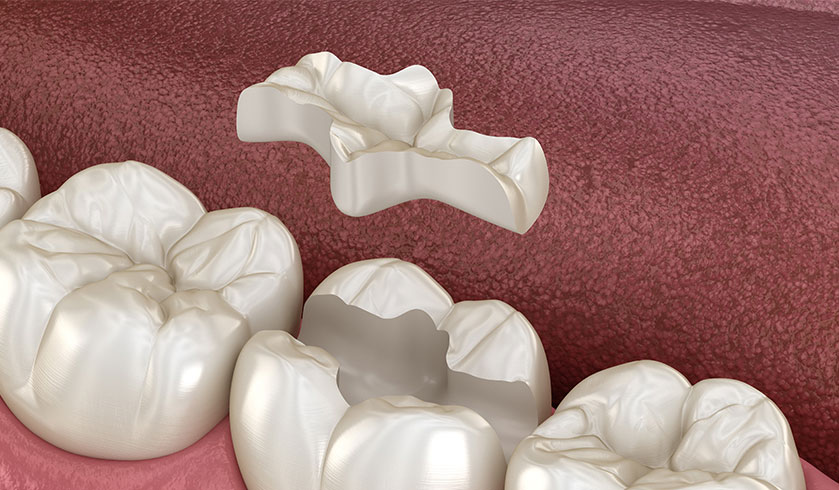Dental fillings or dental restorations are used to fill the tooth and re-establish its size, shape, strength and functionality. Dental fillings are one of the least invasive dental procedures. If you suffer from dental decay, visiting a dentist is of utmost importance to get it cleaned and restored. The treatment stops the decay from progressing further and infecting the dental pulp.
Dental fillings were traditionally made from metallic materials. The most popular material to restore a clean dental cavity was a silver amalgam. Apart from this, noble metals like gold have also been used. However, with time the demand for aesthetics gave rise to the concept of white fillings.
White fillings (also called tooth-coloured fillings) are aesthetically far superior to traditional metal options. They blend perfectly with the tooth and appear much more natural in comparison to metallic ones. They don’t stain easily. Their property of being tooth coloured makes them much more desirable as they are virtually unnoticeable when done by a trained dental professional.

What Are My White Dental Filling Options?
Composite Dental Fillings
A dental composite is a tooth-coloured resin and glass mixture used to restore decayed, damaged and broken teeth. Composite dental resins come in a variety of tooth-coloured shades. Your dentist will analyse your natural teeth’ colour and select a shade that matches it. This ensures that the dental composite filling blends with your natural tooth structure, making the treatment virtually unnoticeable.

Dental composites are essentially bonded to the tooth surface. Your dentist will first isolate the tooth which needs filling with the help of a rubber dam. Then they will use dental drills to clean the decayed tooth part. Next, they will use a dental etchant containing 37% phosphoric acid to etch the surface of your teeth; this aids in bonding the filling to the tooth surface. Then, a bonding agent is applied. After this, the tooth-coloured composite resin is used in small increments to rebuild the lost tooth structure and give it a natural appearance. This is hardened by using a curing light. After this, the filling is trimmed and polished to replicate the natural tooth’s structure.
Ceramic Fillings
Ceramic fillings are made of porcelain which is manipulated to match the shade of your teeth. They are durable and aesthetically pleasing and can be more resistant to staining and discolouration than composite fillings. Ceramic fillings are successfully used to restore significant and more substantial tooth defects.
Glass Ionomer Fillings
Glass ionomer cement is a mixture of glass and acrylic. The most striking feature of glass ionomer fillings is their property of releasing fluorides. This feature ensures that the teeth are protected from further decay, and it also strengthens the structure. The problem is that they are much less durable and last shorter than other white filling options. It also does not match the tooth colour to perfection as other filling types do.
Inlays

Your next option for white fillings is Inlays. Inlays are a method of indirect dental filling. Composite fillings are done in the chair, directly in the tooth, which makes them direct fillings. In contrast, an Inlay is prepared in a laboratory outside the mouth, thus called indirect dental fillings. Inlays are used to restore the back teeth’s biting surfaces, especially when the decay is extensive and cannot be appropriately restored by direct composite fillings.
First, your dentist will clean the decayed tooth part; next, they will take an impression of your upper and lower teeth. This impression is used to create a mould that is sent to the laboratory to create an Inlay. Inlays are tooth-coloured indirect restorations and are much stronger. Your dentist will use dental cement to glue this inlay in your prepared dental cavity in your next appointment.
Inlays look beautiful and are an excellent way to restore significant tooth defects effectively to their original size. They look and feel exactly like a natural tooth would.
Onlays
Onlays are similar to inlays as they are also prepared outside the mouth. Onlays are, however, used when the damage is even more pronounced. It is indicated in situations where dental decay has also infected one of the cusps of your teeth. These cusps are present on the biting surfaces of the teeth and aid in proper chewing and maintaining adequate jaw relations. Onlays restore these damaged cusps and establish the size, shape, strength and function of the tooth.
Whatever may be the cause of your teeth sensitivity, our experienced dentists and specialists have treatments to relieve the symptoms of sensitive teeth.
Dental fillings form a crucial part of dentistry, and knowing about the different fillings gives you the power to select what’s best for you with the advice of your dentist.

